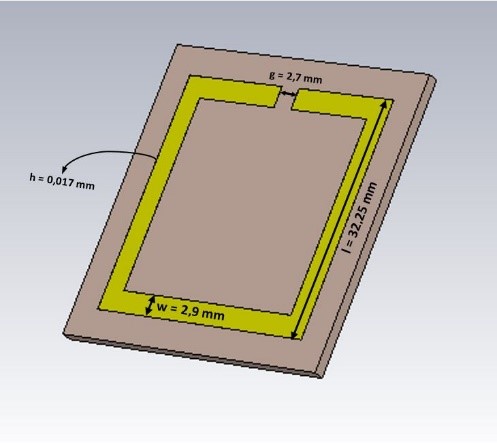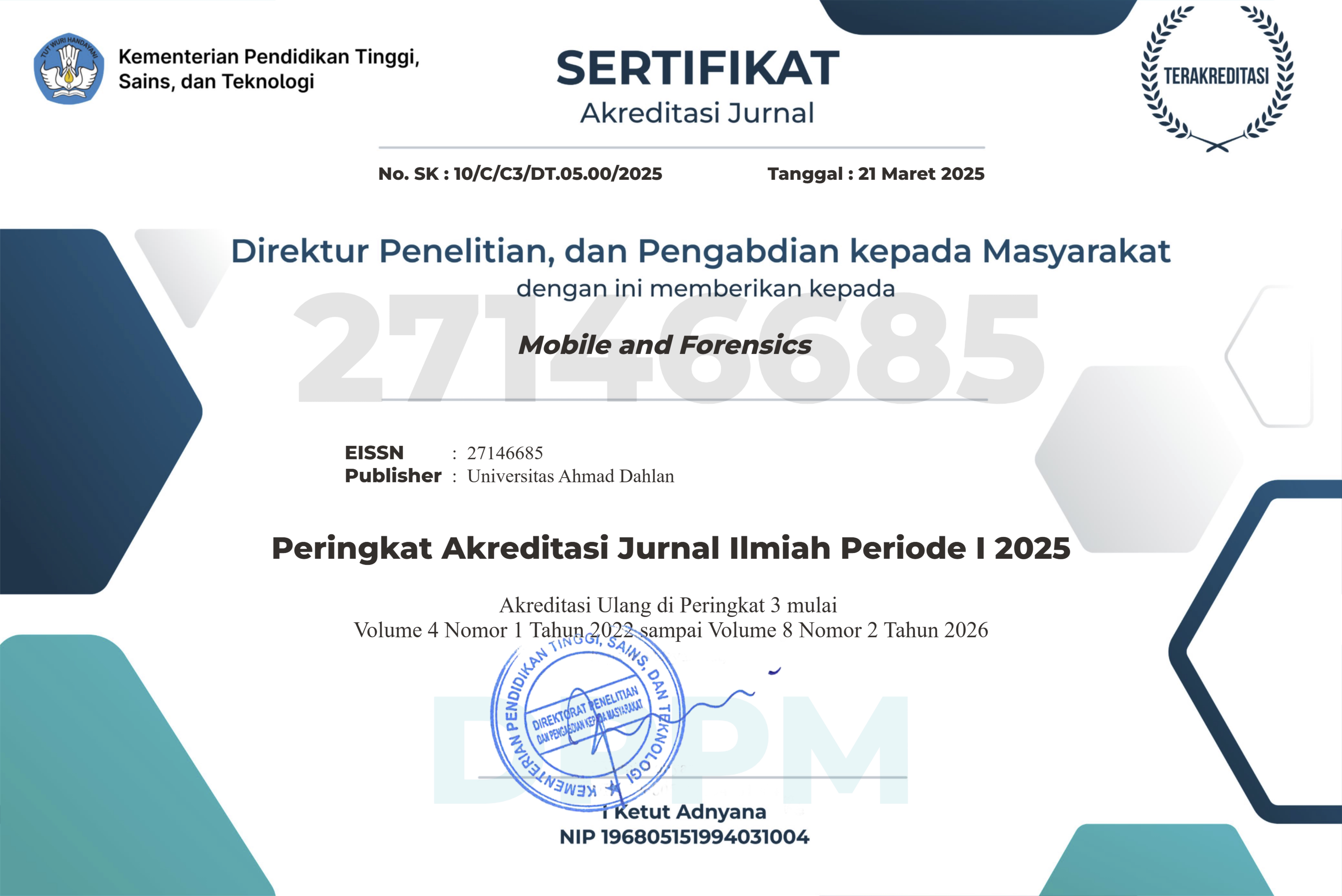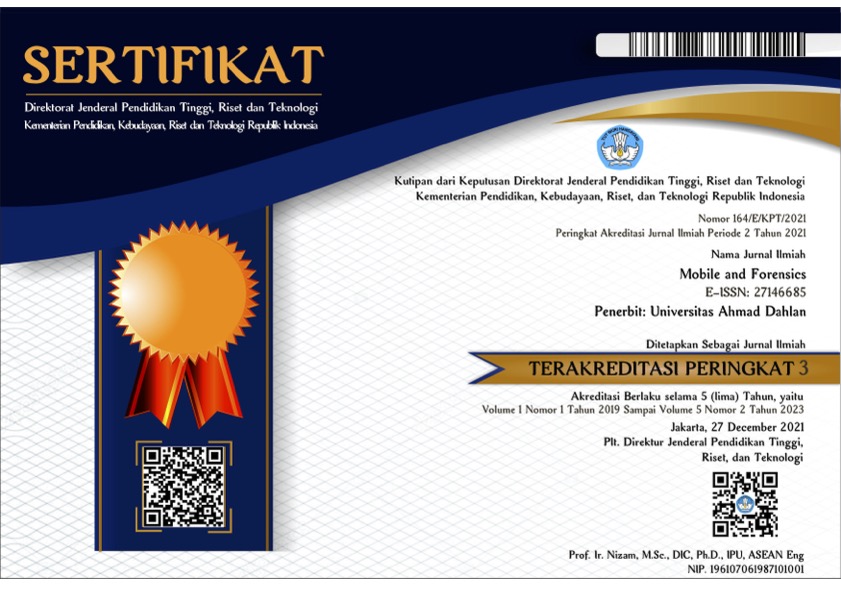Modeling of Split Ring Resonator for Harvesting Electromagnetic Energy with Resonant Frequency of 950 MHz
DOI:
https://doi.org/10.12928/mf.v4i1.5870Keywords:
Split Ring Resonator, Microwave, Resonant Frequency, CST, Energy HarvestingAbstract
The use of a split ring resonator (SRR) as an electromagnetic energy harvester can increase the flexibility of electronic devices because the rechargeable power does not require the connection of cables and batteries. The energy used in the electromagnetic 950 MHz implies one of the frequencies of the wireless network en masse in the room. The objection in this research is to find out how to design an SRR that has a resonant frequency of around 950 MHz, and how to know its characteristics. Based on previous research, variations were carried out with three measurement parameters which were carried out separately and simulated using CST software to achieve a resonant frequency of 950 MHz. The results of the simulation and design process with CST software are three SRR models which are then named SRR 1, SRR 2, and SRR 3. SRR 1 has a ring width 5.6 mm,a slit width 2.7 mm, a ringside length 35 mm, and a ring plate thickness 0.017 mm. SRR 2 has 2.9 mm in a ring width, 10.8 mm in a slit width, 35 mm in a ringside length, and 0.017 mm in a ring plate thickness. SRR 3 has a ring width 2.9 mm, a slit width of 2.7 mm, a ringside length of 32.25 mm, and a ring plate thickness of 0.017 mm. SRR is expected to obtain energy from wireless network energy that is often used indoors.

Downloads
Published
Issue
Section
License
Copyright (c) 2022 Ahmad Raditya Cahya Baswara, F Danang Wijaya, Eka Firmansyah, Tua Raja Simbolon, Berthianna Nurcresia

This work is licensed under a Creative Commons Attribution-ShareAlike 4.0 International License.
Start from 2019 issues, authors who publish with JURNAL MOBILE AND FORENSICS agree to the following terms:
- Authors retain copyright and grant the journal right of first publication with the work simultaneously licensed under a Creative Commons Attribution License (CC BY-SA 4.0) that allows others to share the work with an acknowledgment of the work's authorship and initial publication in this journal.
- Authors are able to enter into separate, additional contractual arrangements for the non-exclusive distribution of the journal's published version of the work (e.g., post it to an institutional repository or publish it in a book), with an acknowledgment of its initial publication in this journal.
- Authors are permitted and encouraged to post their work online (e.g., in institutional repositories or on their website) prior to and during the submission process, as it can lead to productive exchanges, as well as earlier and greater citation of published work.

This work is licensed under a Creative Commons Attribution-ShareAlike 4.0 International License.












 Mobile and Forensics (MF)
Mobile and Forensics (MF)